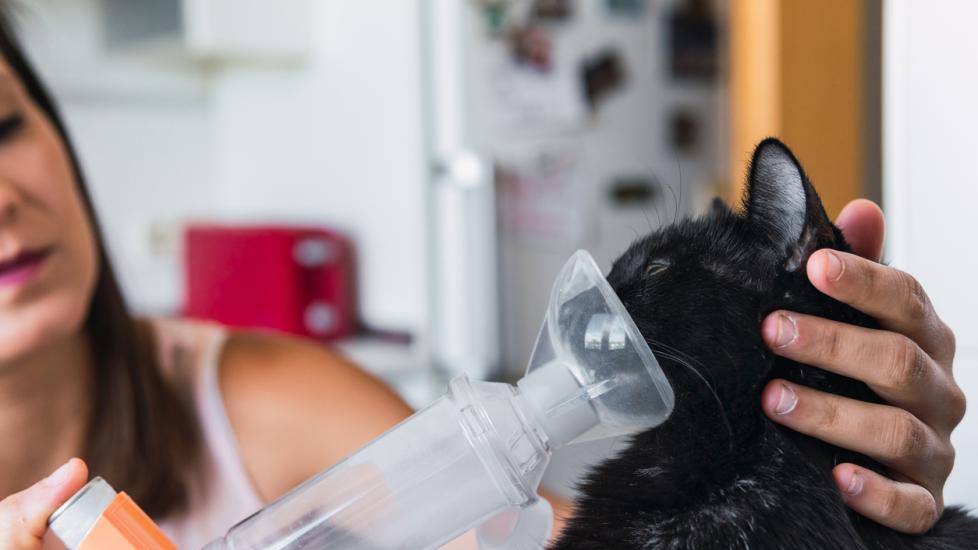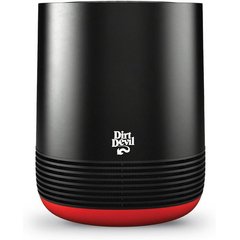How To Give Pets an Inhaler
The following may contain Chewy links. PetMD is operated by Chewy.
Inhaled medications have long been used by people to manage certain diseases affecting the lungs. But they’re not limited to our own treatment: They are often used in an off-label capacity (in species for which they are not specifically designed) for treating airway diseases in pets, too. That’s where inhalers for cats and dogs come in.
Dog and cat inhalers can easily access a targeted area in the body—in this case, the lungs—to have a direct, local effect. They are unlikely to cause systemic (whole-body) side effects, and pet inhalers also allow medication to work faster than those given orally.
When Do Dogs and Cats Need an Inhaler?
Inhalers are also called MDIs, or metered dose inhalers, which means the medication comes out of the inhaler in exact amounts. Two main types of medications are prescribed for dogs and cats as inhalers: bronchodilators and corticosteroids.
-
Bronchodilators work to relax the muscles in the lungs and widen airways. These medications don’t control inflammation, but they can help with symptomatic relief. The most common bronchodilator used in an inhaler is albuterol, which is commonly used in cats to treat feline asthma.
-
Corticosteroids reduce inflammation and swelling in the airways. The most common steroid used in an inhaler is fluticasone, which is most commonly used in dogs for treating chronic bronchitis.
Albuterol and fluticasone can be prescribed to both dogs and cats as inhalers for conditions that affect the lungs.
Recommended Products
How Inhalers are Administered
Humans use inhalers by taking a big breath and inhaling the medication. But because we can’t ask our pets to inhale on command, we use a chamber device for our dogs and cats that works with available inhalers.
The chamber is made of two components: a mask and a cylindrical space that holds the aerosolized medication until the pet breathes it in. There are specific chambers and masks designed for cats and dogs.
A well-fitting face mask ensures your pet is getting the medication comfortably. Chambers are also necessary to ensure your pet is getting a low flow of medication and won't be surprised by a big puff of air.
Your veterinarian will tell you how often to administer the inhaler, depending on your pet’s issue. Sometimes you’ll need to give your pet an inhaler several times per day, while some pets will only require it only as needed.
How to Give Your Pet an Inhaler
To give your cat or dog an inhaler:
-
Remove the cap and shake the inhaler vigorously 10-15 times.
-
Insert the inhaler into the chamber device.
-
Apply the chamber’s mask to your pet’s face, making sure to cover both their mouth and nose.
-
Press the inhaler the prescribed number of times to release the medication.
-
Count your pet’s breathing to ensure they’ve taken approximately 10 breaths.
-
Wipe your pet’s face with a damp cloth to remove any residual medication.
Tips for Giving an Inhaler to Your Pet
To make giving your pet an inhaler easier, they have to get used to it. A slow introduction over a few days without the use of medication—and using positive reinforcement—can go a long way in making your pet comfortable with the process.
While you’re using the inhaler, give your pet love and gentle attention. Reward your pet with a favorite treat after the treatment is done.
What To Do If You Miss a Dose
If your veterinarian has instructed you to give your pet albuterol or fluticasone on a set schedule and you forget a dose, give it to them as soon as you remember. But if it’s almost time for the next dose, simply skip the missed dose and resume your normal schedule. Do not give extra or double doses, as overdoses of inhaled medications like albuterol can cause serious side effects.
Some inhalers are known as rescue inhalers and are not given on a regular basis. Ask your veterinarian how much and how frequently you should give the inhaler to your pet, and what the next step is if your pet is not improving on the prescribed amount.
Can You Give Human Albuterol to Pets?
Although there are currently no FDA-approved inhaler medications for pets, inhaled medications are readily used by veterinarians, who can prescribe certain human drugs for animals in appropriate circumstances. This is called extra-label (or off-label) usedog because this use isn’t described on the drug label.
Featured Image: iStock/Jorge Aguado Martin




